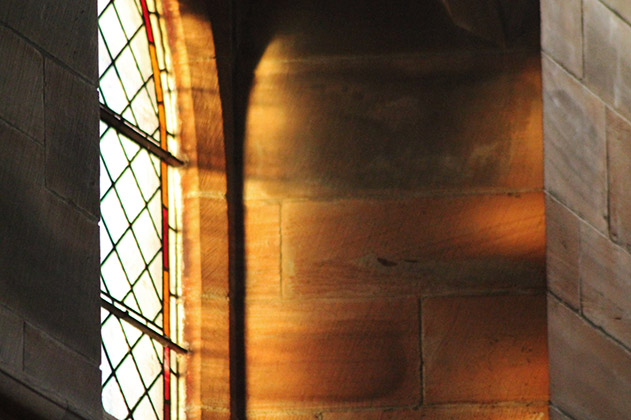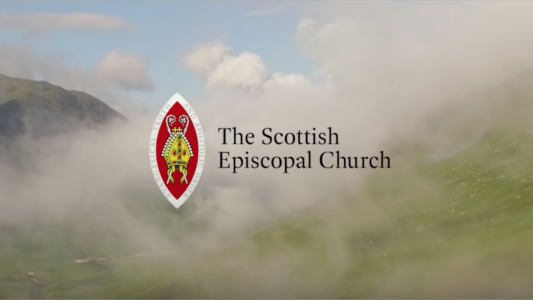Download PDF
Download Word Document
MAINTAINING GRAVEYARDS
CHECK LIST OF GOOD PRACTICE
FOR THE SCOTTISH EPISCOPAL CHURCH
The following points identify the key issues that need to be considered when undertaking conservation and maintenance of graveyards.
Published 2020
Maintenance Strategy
Prepare appropriate documentation for the graveyard. This will include a layout plan, and an inventory of each monument or memorial. Preparation of a management plan and identification of gravestones at risk is recommended. If there are significant historic graves, a Conservation Plan should provide the overview on the strategic approach.
All survey and recording work, including recording of inscriptions, should be carried out using appropriate methodologies. The management plan should identify the priority for repair in the graveyard.
Within a graveyard, identify all the ‘important’ features; including grave-markers, buildings, gates, enclosures and flora and fauna that contribute to the significance of the graveyard. Important features may be classified as listed buildings, scheduled ancient monuments, sites of special scientific interest or designed landscapes.
As far as possible, gravestones should be preserved in their original setting.
 Ensure that all necessary consents, i.e. Canon 35 approval from the diocese, and Listed Building Consent, are obtained before starting work
Ensure that all necessary consents, i.e. Canon 35 approval from the diocese, and Listed Building Consent, are obtained before starting work
Administration
Before any work within a graveyard is undertaken seek appropriate professional advice. Professional advice may be required from:
- An archaeologist, historian or other appropriate person to prepare a conservation plan.
- A conservation architect to survey and prepare conservation proposals for any buildings within the burial ground.
- A conservation or monumental mason in connection with re-sitting, re-setting or repair of gravestones.
- An archaeologist where any ground disturbance is planned.
- Ecologist to advise on possible disruption to plant and animal life in the graveyard.
- Historic Environment Scotland and the Local Authority to check the requirements for necessary permissions.
Care of Gravestones
 Particular attention should be paid to gravestones formed from sandstone as, of all the stone types; they are most susceptible to decay as a result of a number of decay processes. They are also particularly vulnerable to further damage due to inappropriate intervention.
Particular attention should be paid to gravestones formed from sandstone as, of all the stone types; they are most susceptible to decay as a result of a number of decay processes. They are also particularly vulnerable to further damage due to inappropriate intervention.
As a general rule, gravestones should not be cleaned. If, however, cleaning is thought to be essential this should be done only by an experienced conservator. Unless cleaning consists of gentle brushing with a soft bristle brush and rinsing with clean water, there is the potential to cause irreversible damage to porous stone.
As a rule, no attempt should be made to realign tilting markers, unless they are in danger of collapse, as this may disrupt adjacent graves and detract from the character of the graveyard. Before any re-setting is undertaken the stability of the monument should be assessed by a stone mason.
Seek specialist advice to deal with graffiti on gravestones, especially porous stones, and other stone features. Inappropriate treatment can be damaging to the stone.
Gravestones or gravestone inscriptions should not be painted as this may cause further damage to the stone. Where there is evidence that paint was applied as an original feature seek professional advice before undertaking any remedial work.
Gravestone Repairs
 Lifting stones must be only carried out under specialist supervision and it should be recognised that friable stones are liable to break-up if lifting is attempted.
Lifting stones must be only carried out under specialist supervision and it should be recognised that friable stones are liable to break-up if lifting is attempted.
Repair of fractured gravestones will require the use of non-ferrous dowels of suitable length and either polyester resin (for clean breaks) or lime mortar (for wider joints).
For repairs to stone, hard cement mortars should be avoided and lime mortar only used.
Where inscription has been lost from a stone, re-cutting the stone should not be undertaken. It is preferable to position a new plaque, with the text reproduced, in the ground at the front of the original tombstone.
Ensure that all volunteer workers are fully informed about the nature and dangers of the work and have received appropriate training to enable them to undertake the task, including health and safety.
 Temporary stabilisation of elements may be necessary to prevent collapse. Features that have been temporarily supported must become priority items for permanent repair or stabilisation. The design of temporary support should not be detrimental to the site as a whole.
Temporary stabilisation of elements may be necessary to prevent collapse. Features that have been temporarily supported must become priority items for permanent repair or stabilisation. The design of temporary support should not be detrimental to the site as a whole.
Temporary laying down of gravestones on the ground may be necessary in an emergency situation. Remedial work and re-setting should take place as a priority.
Ground Maintenance
Do not cut back turf from the bases of graves and, if practicable, re-turf exposed soil where there has been done to simplify grass cutting in a high graveyard.
Where a gravestone that has been concealed by grass is uncovered, it should be recorded, and then re-turfed, where appropriate, to prevent further deterioration.
 Do not use ride-on mowers for grass cutting in close proximity to memorials, due to the risk of damage. Hand-held equipment only must be used. Avoid the use of strong weed-killers which have chemicals that can erode stone.
Do not use ride-on mowers for grass cutting in close proximity to memorials, due to the risk of damage. Hand-held equipment only must be used. Avoid the use of strong weed-killers which have chemicals that can erode stone.
Paths are part of the original design and, generally the alignment of existing paths should be retained. Avoid ‘replacing’ surfaces which are unsympathetic to the character of the graveyard.
Provision of a paved surface on principal paths may be desirable to provide disabled access between a gate and the church entrance, and careful design and choice of materials is important to retain character.
Any digging of trenches for service pipes, drains or cables need to be carefully planned and should be supervised by an archaeologist.
Nature
 Adopt a policy of minimal change with regards to nature conservancy in the graveyard. Trees and hedges should not be cut down unless they are diseased and in danger of toppling.
Adopt a policy of minimal change with regards to nature conservancy in the graveyard. Trees and hedges should not be cut down unless they are diseased and in danger of toppling.
New tree planting to be in keeping with the historic layout or cause damage to the built heritage. Diocese to approve plans for new planting under Canon 35.
Animal Activity
 A quiet graveyard can be an attractive location for local wildlife to take up residence such as rabbits, squirrels and foxes. However, these can be destructive if they start to burrow in the ground. For best approach to deter or control activity, an ecologist should be consulted. Simple backfilling of burrows at an early stage in activity may be sufficient to encourage the animals to move elsewhere.
A quiet graveyard can be an attractive location for local wildlife to take up residence such as rabbits, squirrels and foxes. However, these can be destructive if they start to burrow in the ground. For best approach to deter or control activity, an ecologist should be consulted. Simple backfilling of burrows at an early stage in activity may be sufficient to encourage the animals to move elsewhere.
Memorial Gardens
 Similar to the strategy for graveyards, a record and plan of the interment of ashes should be recorded with a plan of plots and register of names and dates, including note of whether ashes are contained within an urn.
Similar to the strategy for graveyards, a record and plan of the interment of ashes should be recorded with a plan of plots and register of names and dates, including note of whether ashes are contained within an urn.
A new memorial garden requires consent under Canon 35. A memorial garden should be marked with an appropriate plaque or cross.
Accessibility
 It is important that wherever possible a graveyard is accessible to as many people as possible and ramps and level paths should be provided. However, older graveyards on steep sites with steps can be very difficult to modify.
It is important that wherever possible a graveyard is accessible to as many people as possible and ramps and level paths should be provided. However, older graveyards on steep sites with steps can be very difficult to modify.
A very sensitive approach should be taken in making improvements with handrails and short ramps that do not disturb or interfere with graves and gravestones. Professional design assessment of the existing conditions is recommended before making adaptations.
Scheduled Monuments
 Some graves and memorial are so significant historically that they have been designated as Scheduled Monuments by historic Environment Scotland and an additional level of care is required in protecting these from damage. Formal consents may be required and technical support with conservation grants from HES may be available in the care of the monuments.
Some graves and memorial are so significant historically that they have been designated as Scheduled Monuments by historic Environment Scotland and an additional level of care is required in protecting these from damage. Formal consents may be required and technical support with conservation grants from HES may be available in the care of the monuments.
Consideration of the re-location of very fragile pieces may be necessary and all formal consents are required for this type of conservation and repairs.
War Memorials and Commonwealth War Graves have been recorded on national registers to allow visitors to locate and visit them. Check that any in the graveyard have been recorded with correct information.
USEFUL SOURCES FOR REFERENCE
SEC Canon 35 guidance: Contact the diocesan office and website
Listed building and planning guidance documents are available from the local authorities planning departments
Historic Environment Scotland guides:
Graveyards: https://www.historicenvironment.scot/archives-and-research/publications/?searchPubText=graveyards
Scheduled Monument Condition monitoring: https://www.historicenvironment.scot/archives-and-research/publications/publication/?publicationId=f24f7680-5d39-4c31-8e5c-a6a400a78b54
National record of Archaeology: https://www.historicenvironment.scot/archives-and-research/archives-and-collections/national-record-of-the-historic-environment/
War Memorials and Commonwealth war graves in Scotland: http://www.warmemorials.org/links-scotland/









